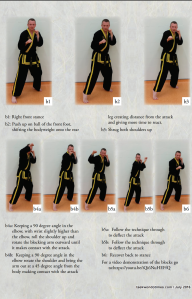Imagine you are in a fight. You are fairly even matched to your opponent in terms of skills and abilities. When you attack they can successfully dodge or block you. What can you do?
One of the things I teach my students is how to fake. For example, if I want to hit my opponent in the head, I first throw a fast fake low kick. This brings their guard down or makes them block, opening up their head for my actual attack and greatly increasing my chance of hitting them.
Why is this so effective when used correctly? To really understand it you need to understand how the brain functions.
Right now, what you are seeing isn’t the actual present. You’re actually seeing roughly 80 milliseconds into the past. The light from your screen hits your eyes and sends a signal to your brain. Your brain then processes that information, sizes, shapes, colours etc. It decides what it needs to focus on. Whether there is something to be aware of, a potential danger or benefit for you, and then presents that information to your conscious. This is all done in roughly 80 milliseconds. Everything you actually see is therefore in the past by the time you see it.
Now even though 80 milliseconds is a super quick amount of time, it leaves your brain at a disadvantage should something be moving fast. If we were hunting an animal, or being attacked by one, that 80 millisecond delay could mean us going hungry, getting attacked and then dying. Or in modern terms it can mean the difference between catching a ball moving at speed, and the ball hitting you in the face.
The human brain is an amazing organ though. And it has evolved a way around this. When something moves quickly it has learned to anticipate this movement, judge its trajectory and in real time, adjust the image you are seeing placing the object roughly where it should be 80 milliseconds ahead. So suddenly we can catch that animal, dodge that attack, and not take a ball to the face.
Another thing that happens to us when we are under attack is our fight or flight system kicks in. When this happens our blood goes from the non essential organs to the limbs to help us fight or run away. Our field of vision narrows on to what’s a danger and our higher brain functions slow down, which is why we can barely say words of more than a few syllables when we are under threat.
So with this knowledge, you can see how faking can be so effective.
When I throw for instance a quick low fake kick, my opponents brain takes 80 milliseconds to get that information, decide that it is a threat. At this point it floods the body with adrenaline. And it starts to anticipate where my foot is going to be 80 milliseconds into the future. It then has to send a message to the body to block or evade this attack, and likely its vision is now narrowing on to the incoming threat.
But its a fake. As I see the guard drop, or the block coming I launch my actual attack, a punch to the head.
The first problem for my opponent is simple. If the adrenaline has done its job, he might not even notice my fist approaching at speed due to narrowed vision. Even if he does he has at least an 80 millisecond delay before it notices. His brain then needs to notice the threat, decide to take action and try and get the body to respond. If he is blocking his hand and body are already travelling in one direction and he needs to switch that. This all takes time. Only in milliseconds but its enough for me to land a hard clean punch. From that point on his stressed brain is playing catch up to my barrage of other attacks aimed at the openings that I am exploiting.
And that’s why learning effecting faking techniques can be a game changer for students during defence drills, sparring or actually fighting.
If you would like to learn some of the effective faking techniques I’ve learned and developed over the years I will very soon be releasing an online course teaching them. If you are an instructor it will give you something new and fun to add to your classes. If you are a student, this will help level you up, and make you a lot harder to defend against. I’ve had colour belt students use these techniques to catch out senior black belt instructors and Masters. They are worth learning.
If you would like to find out more about my course then the link is
https://modernmartialart.thinkific.com/
Pil Seung
Dale Miller
Master Instructor
Regards
Dale Miller
Master Instructor of Choi Kwang Do.



